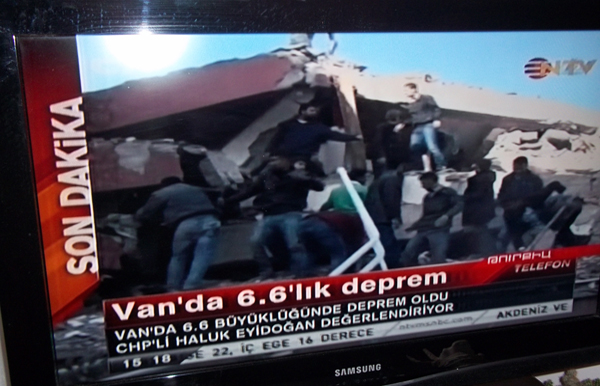
When the earthquake wave passed and we were able to send the kids to play in the yard, I logged onto Twitter. Two minutes hadn’t yet passed — my friends had filled my Twitter timeline with news about the earthquake. In a matter of minutes, links to expert sites and resources on the earthquake in Van, Turkey, were added to my Twitter stream.
Links to photos, video footage and text-based information of the earthquake appeared first on Twitter.
Simultaneously becoming active was Facebook, where Armenians not only were disseminating information, but also were amazed at the lack of information on local television on the earthquake which was felt quite strongly in Armenia.
TV channels broadcasting the football match or soap operas were at the very least initially unmoved. A Facebook status update — “It’s interesting: don’t these football announcers feel an earthquake?” — was felicitous. Even textual information was absent. Then the news appeared on Yerkir Media TV, while H1 (Armenia’s Public Television) interrupted the Under-19 football match and aired a special broadcast about the quake.
During the day, the news stream became more regulated. The newly established ArmNews Armenian news channel even aired one of Internews’ films about being prepared for emergency situations, including earthquakes.
Online news media responded quickly to the Van earthquake and the aftershocks felt in Armenia. It took 10–15 minutes for the first Armenian-language news about the quake to appear online.
Late in the overall information stream was the response by Armenia’s Ministry of Emergency Situations. It was this way also regarding this month’s earthquake in Garni. Perhaps it’s time for the Ministry of Emergency Situations’ Emergency Channel to have a Twitter account?
The views expressed in the column are those of the author's and do not necessarily reflect the views of Media.am.


Add new comment
Comments by Media.am readers become public after moderation. We urge our readers not to leave anonymous comments. It’s always nice to know with whom one is speaking.
We do not publish comments that contain profanities, non-normative lexicon, personal attacks or threats. We do not publish comments that spread hate.